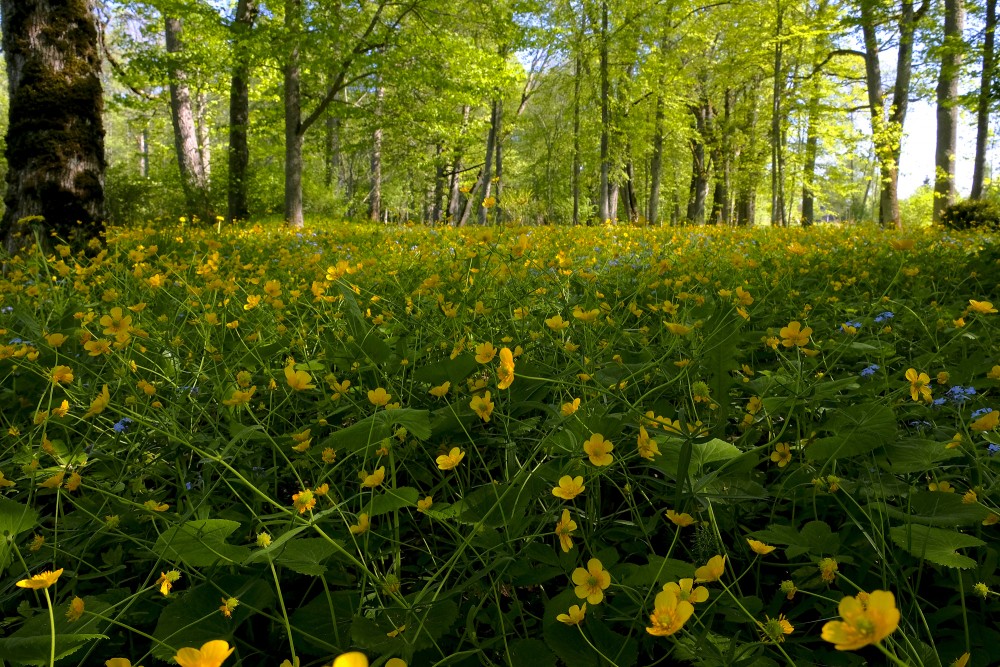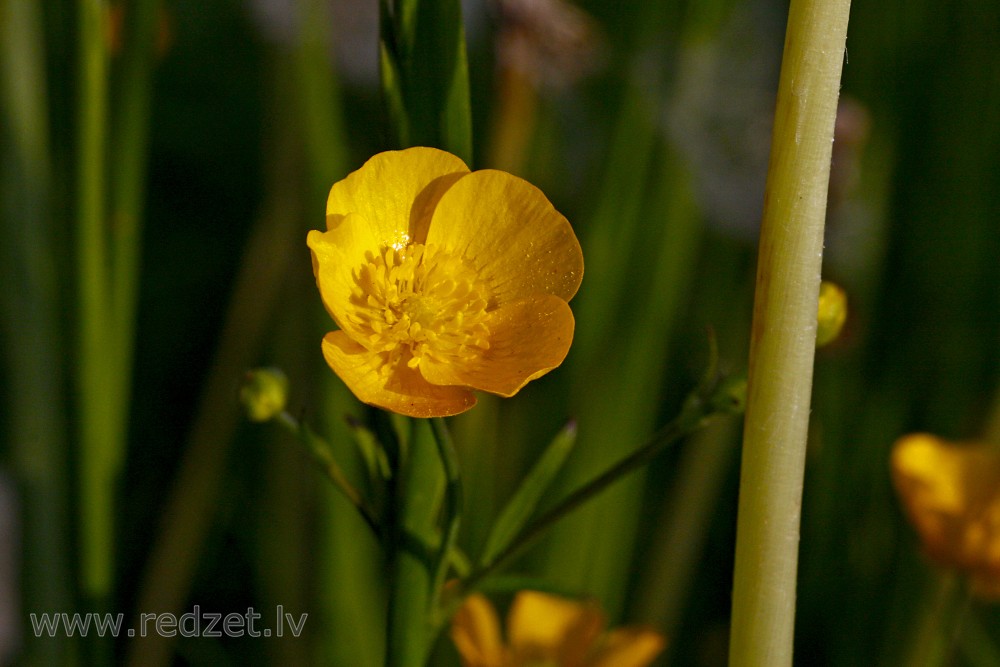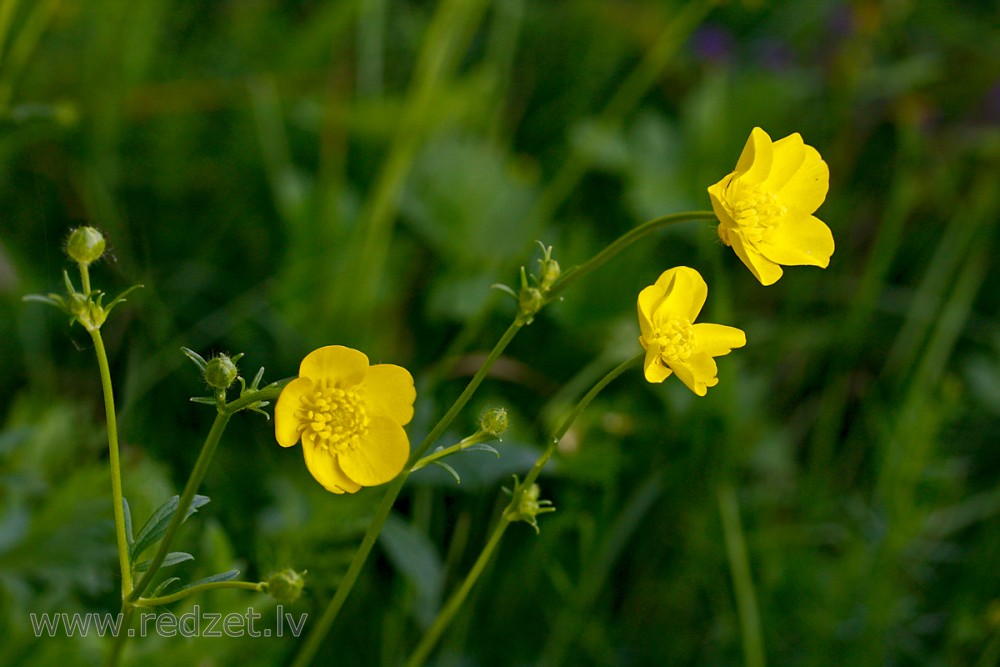Ranunculus
Ranunculus is a large genus of about 1700 to more than 1800 species of flowering plants in the family Ranunculaceae. Members of the genus are known as buttercups, spearworts and water crowfoots.
The genus is distributed in Europe, North America and South America. The familiar and widespread buttercup of gardens throughout Northern Europe (and introduced elsewhere) is the creeping buttercup Ranunculus repens, which has extremely tough and tenacious roots. Two other species are also widespread, the bulbous buttercup Ranunculus bulbosus and the much taller meadow buttercup Ranunculus acris. In ornamental gardens, all three are often regarded as weeds.
Buttercups usually flower in the spring, but flowers may be found throughout the summer, especially where the plants are growing as opportunistic colonizers, as in the case of garden weeds.
The water crowfoots (Ranunculus subgenus Batrachium), which grow in still or running water, are sometimes treated in a separate genus Batrachium (from Greek βάτραχος bátrakhos, "frog"). They have two different leaf types, thread-like leaves underwater and broader floating leaves. In some species, such as R. aquatilis, a third, intermediate leaf type occurs.
Ranunculus species are used as food by the larvae of some Lepidoptera species including the Hebrew character and small angle shades. Some species are popular ornamental flowers in horticulture, with many cultivars selected for large and brightly coloured flowers.
| Ranunculus | |
| Kingdom: | Plantae |
| Clade: | Tracheophytes |
| Clade: | Angiosperms |
| Clade: | Eudicots |
| Order: | Ranunculales |
| Family: | Ranunculaceae |
| Subfamily: | Ranunculoideae |
| Tribe: | Ranunculeae |
| Genus: | Ranunculus |
Description
Plant
Buttercups are mostly perennial, but occasionally annual or biennial, herbaceous, aquatic or terrestrial plants, often with leaves in a rosette at the base of the stem. In many perennial species runners are sent out that will develop new plants with roots and rosettes at the distanced nodes.
The leaves lack stipules, have petioles, are palmately veined, entire, more or less deeply incised, or compound, and leaflets or leaf segments may be very fine and linear in aquatic species.
Flowers
The hermaphrodite flowers are single or in a cyme, have usually five (but occasionally as few as three or as many as seven) sepals and usually, five yellow, greenish or white petals that are sometimes flushed with red, purple or pink (but the petals may be absent or have a different, sometimes much higher number).
At the base of each petal is usually one nectary gland that is naked or may be covered by a scale. Anthers may be few, but often many are arranged in a spiral, are yellow or sometimes white, and with yellow pollen. The sometimes few but mostly many green or yellow carpels are not fused and are also arranged in a spiral, mostly on a globe or dome-shaped receptacle.
Reflective petals
The petals of buttercups are often highly lustrous, especially in yellow species, owing to a special coloration mechanism: the petal's upper surface is very smooth causing a mirror-like reflection. The flash aids in attracting pollinating insects and temperature regulation of the flower's reproductive organs.
Fruit
The fruits (in this case called achenes) may be smooth or hairy, winged, nobby or have hooked spines.
en.wikipedia.org





